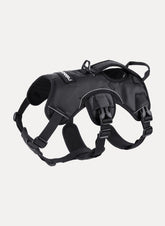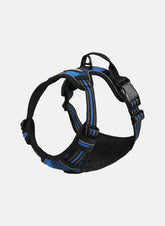11 Kinds of pet daily care that can be done at home
In general, veterinarians do not recommend that owners do professional pet care for pets at home.
Because many owners do not properly care for pets, such as using substandard insecticides, medicines for feeding humans, etc.

So if you encounter problems, it is better to go to the veterinary hospital and let a professional doctor solve it. Private medical care at home is likely to delay treatment and cause delays in the condition.
However, although most professional medical care does not encourage the owner to DIY at home, the following 11 daily care can be done at home~

1. Cut nails
Many family-raised pets will ignore the problem of pet nails. Pet nails too long will cause the pet's toe bones to deform, affect walking, and even paronychia may cause the nail to detach from the whole. Therefore, you should take your pets out every day to walk and bend their nails.

If you don’t have time, you should also trim your nails regularly. If you can’t, you can buy a nail grinder, which is very easy to operate. Most pet nail grinder on the market are safe and silent, which can protect your pet from fear.
2. Brush hair
Buy a handy comb and comb your pets often.
To a large extent, skin diseases are caused by knotted hair, which is not combed for a long time, causing itching and dander of the skin. There is also a problem that the clothes are not taken off for a long time, and they are not completely dried after taking a bath. Therefore, you should comb the hair with a needle comb row every day, which can not only remove floating hair and reduce hair loss but also massage the skin to stimulate hair growth and prevent skin diseases.

Combing hair regularly is also very helpful for pet hair loss. In addition, for cats, TAs like to clean themselves and will always lick their hair. Combing hair regularly can help them avoid gastrointestinal blockage problems caused by excessive accumulation of hairballs.
In addition to combing hair, the hair removal formula of cat food and hair cream can also alleviate hairball problems.

3. Medicated bath
If your pet has skin diseases, you can take a bath at home under the guidance of a veterinarian.
Taking the medicine bath once every two weeks can basically control the disease. But be sure to follow the doctor's advice!

Cats are more afraid of water than dogs, so for cats, bathing at home is better, provided the owner understands how to bathe the cat. Dogs and cats without diseases should not take frequent showers.
4. Trim hair
It's not as difficult as you think to trim pets' obstructive hair, such as the hair hanging down in front of the dog's eyes to cover the eyes, and the messy hair around the cat's anus. No one wants dogs to bump into things because they can't see the front. Cats are affected by excretion because of excessive hair on the buttocks, causing constipation.

Buying a safe electric clipper will make it easy to cut hair. Use scissors (especially pointed scissors, as shown below) to be extra careful, pets will move around at any time, beware of pricks and injuries.

5. Clean ears
If you do not clean the ear canal for a long time or let the ears get water in the bath, it will cause ear inflammation or otodectes cynotis. Serious otodectes cynotis will cause pet deafness. Some pets need to pluck ear hair, such as Poodle, Bichon Frise, and Schnauzer, etc., they need to use ear hair pliers to remove most of the ear hair first. If not, they can also use plucking powder to pluck directly with hands.

Then apply ear cleanser to the inside of the ear. If there is dirt, use a cotton swab to gently remove it. If you do not need to pluck the ear hair, just use ear cleanser to clean it. If your pet doesn't cooperate, you usually touch your ears more often, reach out and squeeze your ears outside the ear canal, and let your ears get used to touching.
6. Brush teeth
For owners who don’t want to spend too much money on pet teeth, brushing their teeth is the veterinarian’s first recommendation. Brushing your dog or cat's teeth regularly (preferably every day) can effectively prevent periodontal disease, eliminating the high cost of going to the hospital for a dental and dental cleaning.
Of course, if pets already have periodontal or other oral problems, they should still seek medical treatment in time.

7. Feeding medicine
Learning how to feed medicine to pets is actually not very difficult. The medicine feeder can also help you to give medicine to them more quickly. The medicine feeder is easier to use for feeding cats.

8. Take body temperature
Buy an electronic thermometer dedicated to your pet. Whenever you are worried that they may have a fever, apply some petroleum jelly to the thermometer and insert it into their ass.

The normal body temperature of a cat or dog is 100 degrees Fahrenheit (37.7 degrees Celsius) to 102.5 degrees Fahrenheit (39.1 degrees Celsius). Pay attention to keep your pet still (when someone helps) when measuring the temperature, to avoid the thermometer from hurting the rectum.
9. Hemostasis
Too many nail clippers exceed the bleeding caused by the bloodline. Generally, hemostatic powder or simple pressure can be used to stop it. However, some serious trauma may require a tourniquet and continuous compression to stop bleeding until it is taken to the hospital.

10. Provide simple first aid
In addition to hemostasis, other first-aid knowledge is also very important to master. Learning first-aid knowledge can stabilize the pet's condition for the first time until it is sent to the veterinarian. Any non-professional can learn how to face pets that are losing blood, pets injured in car accidents, and pets that are drowning, etc.

11. Caring for pets with diabetes
For pets with diabetes, it will be troublesome for the owner to take their blood glucose and urine test to the clinic every time. And cats and dogs suffering from diabetes need regular injections of insulin, especially if the elderly cats are taken to the clinic every day, it will have a great impact on their mental and physical strength.

Learn daily nursing knowledge and take care of pets at home. Especially for cats who are naturally sensitive and timid. But make sure you can master these skills and use them properly~ If you have any questions, please consult your veterinarian at any time!






